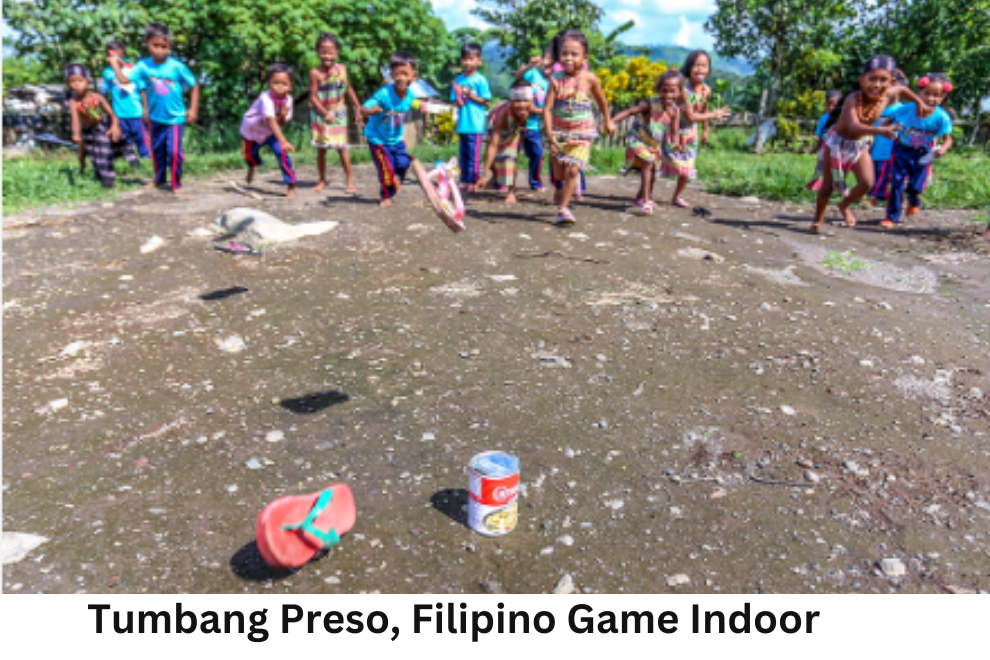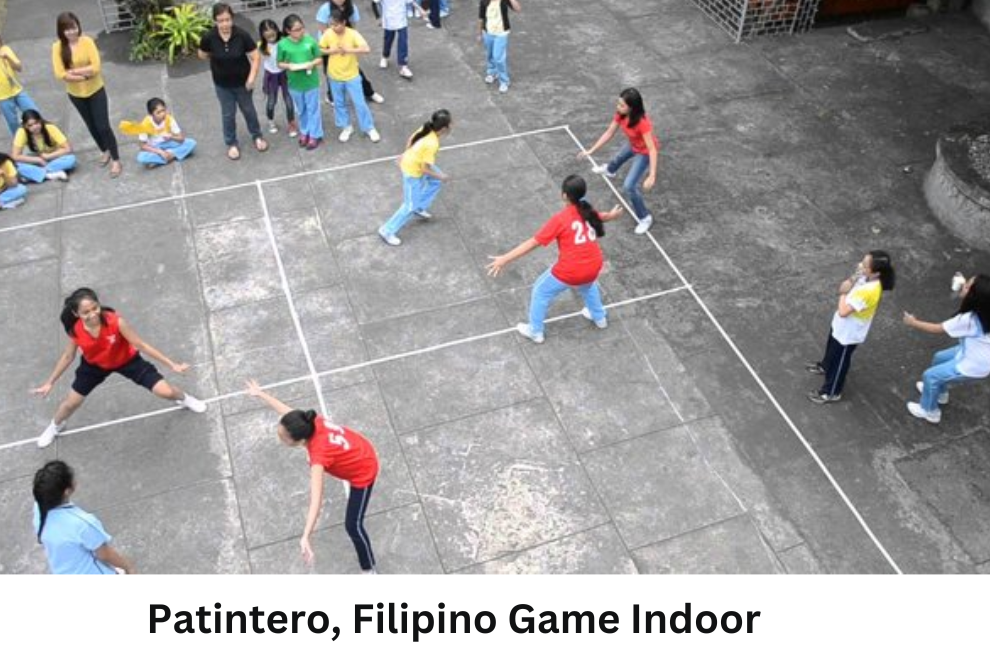The Philippines is a country rich in culture, and one way this is expressed is through traditional games.
Filipino indoor games have been a part of the nation’s heritage for generations, bringing families and friends together in the spirit of fun, learning, and cultural bonding.
These games are not only a source of entertainment but also a way to preserve the Filipino identity and teach valuable lessons in teamwork, strategy, and creativity.
This article will explore some popular Filipino indoor games, their origins, rules, and why they remain relevant today.
1. Sungka: The Traditional Board Game
Sungka is one of the most well-known traditional Filipino indoor games. It is a mancala game, which means it belongs to a family of board games that involve counters and pits. Here’s how it works:

History and Cultural Significance
Sungka has been played in the Philippines for centuries and is believed to have originated in the early 17th century. The game is particularly popular among the Visayan people. Traditionally, Sungka boards are made from carved wood, often featuring intricate designs that reflect Filipino craftsmanship.
How to Play Sungka
- Players: Sungka is a two-player game.
- Equipment: The game board consists of two rows of seven small pits (bahay) and two larger pits (ulo) at each end. Each small pit contains seven shells, stones, or seeds.
- Objective: The goal is to capture more shells in the ulo (the large pits) than your opponent.
- Rules: Players take turns picking up shells from one of their small pits and distributing them counterclockwise. If the last shell lands in your ulo, you get another turn. If it lands in an empty pit on your side, you capture the shells in the opposite pit and place them in your ulo.
Sungka teaches strategic thinking and patience, making it an engaging indoor activity for all ages.
2. Tumbang Preso: Knock Down the Can
While traditionally an outdoor game, Tumbang Preso can be adapted for indoor play, especially in larger indoor spaces. This game combines physical agility with strategic thinking, and it’s a favorite among Filipino children.

History and Cultural Significance
Tumbang Preso, meaning “knock down the prisoner,” is rooted in Filipino street play culture. It symbolizes freedom and resilience, as knocking down the can (the prisoner) is akin to overcoming obstacles.
How to Play Tumbang Preso
- Players: Requires at least three players, but the more, the merrier.
- Equipment: A tin can and slippers (each player uses one).
- Objective: Knock down the can using slippers while avoiding being tagged by the “it” or the “preso.”
- Rules: One player guards the can (the preso), while the others try to knock it down by throwing their slippers. If a player knocks down the can, they must retrieve their slipper before the preso sets the can upright and tags them. The tagged player becomes the new preso.
Adapting Tumbang Preso for indoor play involves using a soft object in place of a tin can and ensuring the space is safe for running and dodging.
3. Piko: The Filipino Hopscotch
Piko is the Filipino version of hopscotch, a game that is easy to set up and play indoors. It’s a simple yet entertaining game that enhances balance and coordination.

History and Cultural Significance
Piko has been a favorite pastime for Filipino children, especially in urban areas. The game’s simplicity and need for minimal equipment make it accessible, encouraging physical activity and coordination.
How to Play Piko
- Players: Suitable for two or more players.
- Equipment: Chalk or masking tape to draw the game grid on the floor, and a small object to use as a marker.
- Objective: Navigate through the grid by hopping on one foot without stepping on the lines or losing balance.
- Rules: Players take turns tossing their marker into the numbered squares. They then hop through the squares, picking up the marker on their way back. The player must skip the square with the marker. The first to complete the grid wins.
Piko is a fun way to encourage movement and balance among children, making it a great choice for indoor play.
4. Luksong Tinik: The Game of High Jumps
Luksong Tinik, or “jump over the thorns,” is another Filipino game that can be modified for indoor play. It involves jumping over an obstacle, and it’s a game that tests agility and coordination.

History and Cultural Significance
Luksong Tinik is traditionally played outdoors, symbolizing overcoming challenges. It’s often played by girls and teaches not just physical agility but also courage and trust among friends.
How to Play Luksong Tinik
- Players: Requires three or more players.
- Equipment: None required, just a safe space to jump.
- Objective: Jump over progressively higher obstacles created by the legs of the “base” players.
- Rules: Two players sit on the ground, positioning their feet and hands to form a “tinik” or “thorn.” The other players take turns jumping over the thorn without touching it. The game continues with the base players gradually raising their hands to increase the height of the thorn.
Indoor play can involve using soft objects like pillows to form the thorn, ensuring safety while preserving the game’s essence.
5. Patintero: The Classic Tag Game
Patintero is another beloved Filipino game that can be adapted for indoor spaces. It combines elements of tag and strategy, making it exciting and dynamic.

History and Cultural Significance
Patintero is one of the oldest and most popular Filipino street games. Its name derives from the Spanish word “tintero,” meaning ink, which refers to the lines drawn on the ground.
How to Play Patintero
- Players: At least four players divided into two teams.
- Equipment: Chalk or tape to draw a grid on the floor.
- Objective: Cross the lines drawn on the ground without being tagged by the opposing team.
- Rules: One team is the taggers, and they stand on the lines of the grid. The other team must cross the lines to reach the other side without being tagged. If a player is tagged, they are out. Teams switch roles after all players have had their turn.
Patintero encourages teamwork, speed, and strategic planning, making it a fun game for children and adults alike.
6. Larong Pinoy: The Revival of Traditional Games
In recent years, there has been a resurgence of interest in traditional Filipino games, driven by a desire to preserve cultural heritage. Organizations and schools are incorporating these games into their programs to teach the younger generation about Filipino culture and history.

Why Indoor Filipino Games Matter
- Cultural Preservation: These games are a way to pass down Filipino traditions to younger generations, ensuring cultural heritage is not lost.
- Learning and Development: They promote physical activity, strategic thinking, social interaction, and teamwork.
- Accessibility: Indoor Filipino games require minimal equipment and can be played in limited space, making them accessible to everyone.
7. Taguan: The Filipino Game of Hide and Seek
Taguan is the Filipino version of the classic hide-and-seek game, beloved by children all over the Philippines. Although traditionally played outdoors, Taguan can easily be adapted for indoor settings, making it a versatile game for family gatherings or rainy days when outdoor play isn’t possible.

History and Cultural Significance
Taguan comes from the Filipino word “tago,” which means “to hide.” The game has been played for generations and is a staple in Filipino childhood. It reflects the joy of childhood innocence and the creativity involved in finding the perfect hiding spot. While simple, Taguan promotes social interaction, quick thinking, and a sense of adventure among players.
How to Play Taguan
- Players: Requires at least three players, but it’s more fun with more people.
- Equipment: No equipment is needed, just a safe indoor space with potential hiding spots.
- Objective: The main goal of the game is for the “It” to find all the hidden players, while the other players try to remain undiscovered for as long as possible.
Rules of Taguan
- Choosing the “It”: One player is chosen to be “It.” This player is responsible for finding the other players who will be hiding. Selection can be done through a simple counting rhyme, or by volunteering.
- Countdown and Hiding: The “It” player closes their eyes and counts to a predetermined number (usually 10 or 20), giving the other players time to find a hiding spot. During this time, the “It” should not peek.
- Seeking: After counting, the “It” opens their eyes and starts searching for the hidden players. The goal is to find and tag each hidden player.
- The Safe Zone: In some variations, a designated safe zone is established where players can run once spotted. If a player reaches the safe zone without being tagged by the “It,” they are considered safe. The first player tagged by “It” usually becomes the new “It” in the next round.
- Game End: The game continues until all players are found. The last player to be found often becomes the next “It,” or the first player tagged can continue being “It” if no safe zone is used.
Why Taguan is a Great Indoor Game
Social Skills: Players learn to strategize, negotiate rules, and interact with each other, enhancing their social and communication skills.
Engagement: Taguan engages players of all ages, making it ideal for family gatherings or parties.
Adaptability: The game can be adapted for different spaces and the rules can be modified to suit the playing environment, such as setting boundaries within the house.
Physical Activity: It encourages movement and can be a good way to keep children active even indoors.
8. Jolen/Holen: The Filipino Game of Marbles
Jolen, also known as Holen, is a popular Filipino game involving marbles. This game is a favorite pastime among Filipino children and can be played both indoors and outdoors, making it a versatile option for any setting. Jolen not only provides entertainment but also teaches precision, hand-eye coordination, and strategic thinking.
History and Cultural Significance
The game of marbles, or Jolen, has been played by Filipino children for generations. The name “Jolen” is derived from the Spanish word “joya,” which means jewel, reflecting the colorful and often shiny nature of the marbles used.
In Filipino culture, Jolen is more than just a game; it is a tradition that brings together children from different backgrounds to play and enjoy each other’s company. It is often played during recess, after school, or in neighborhood gatherings.

How to Play Jolen
- Players: Jolen is typically played by two or more players. The more players, the more competitive and exciting the game becomes.
- Equipment: The game requires a set of marbles, known as “jolen,” which come in various sizes and colors. A larger marble, often called the “shooter” or “tatsing,” is used to hit other marbles.
- Objective: The primary objective of Jolen is to use the shooter to hit and knock other marbles out of a designated playing area. Players aim to collect as many marbles as possible.
Rules of Jolen
- Setting Up the Game: Players draw a circle on the ground or floor using chalk, tape, or any other marker. The size of the circle depends on the number of players and the available space. A common size is about 3 feet in diameter. Each player places an equal number of marbles inside the circle.
- Choosing the First Player: The order of play is usually decided by a coin toss, a quick game of rock-paper-scissors, or by rolling marbles to see whose marble lands closest to a pre-determined spot.
- Playing the Game: The first player uses their shooter marble to try and knock the other marbles out of the circle. The player flicks the shooter with their thumb, aiming at the target marbles. If a player successfully knocks a marble out of the circle, they keep that marble and get another turn. If they miss, the next player takes their turn.
- Winning the Game: The game continues until all the marbles have been knocked out of the circle. The player with the most marbles at the end is declared the winner.
- Variations: There are many variations of Jolen. In some, players take turns shooting from a line drawn a few feet away from the circle. In others, the game may involve specific targets or obstacles within the circle to increase the challenge.
Why Jolen is a Great Indoor Game
- Minimal Space Required: Jolen can be played in a relatively small area, making it suitable for indoor play in living rooms, hallways, or any space where a small circle can be drawn.
- Skill Development: Playing Jolen helps develop fine motor skills, hand-eye coordination, and strategic thinking as players plan their shots and aim carefully.
- Social Interaction: The game encourages social interaction and friendly competition among players, making it a great way to bond with family members or friends.
- Cultural Connection: By playing Jolen, children and adults alike can connect with Filipino culture and tradition, fostering a sense of pride and cultural identity.
9. Doctor Kwak Kwak: A Fun and Engaging Filipino Indoor Game
Doctor Kwak Kwak is a lively and interactive Filipino game that is perfect for indoor play. This game combines elements of role-playing, mimicry, and guessing, making it a favorite among children. It encourages creativity, teamwork, and social interaction, and is typically played at parties, school events, or family gatherings.

History and Cultural Significance
The game Doctor Kwak Kwak is rooted in Filipino culture, reflecting the community’s love for humor, creativity, and playful interaction. It is similar to the concept of playing “doctor” in other cultures but has its unique Filipino twist. The name “Kwak Kwak” mimics the sound of a duck’s quack, which adds a playful, light-hearted element to the game.
How to Play Doctor Kwak Kwak
- Players: The game requires at least five players but can be played with a larger group to increase the fun.
- Equipment: No special equipment is needed, making it an easy game to organize anywhere. Just a room with enough space for the players to sit or stand in a circle.
- Objective: The goal of the game is for the “doctor” to figure out who the “leader” is by observing the actions of the players.
Rules of Doctor Kwak Kwak
- Choosing Roles: One player is chosen to be the “doctor” and leaves the room or closes their eyes while the other players choose a “leader” among themselves. The leader’s job is to initiate actions that the other players will mimic.
- The Doctor Returns: Once the leader is chosen, the doctor is called back into the room and stands in the middle of the circle. The other players form a circle around the doctor.
- Game Play: The leader starts by performing a simple action, such as clapping hands, snapping fingers, or tapping feet. All the other players must follow the leader’s actions and mimic them simultaneously. The leader should change the actions regularly to keep the game dynamic and fun.
- The Doctor’s Task: The doctor’s job is to observe the players carefully and figure out who the leader is. The leader should try to change actions discreetly without being noticed by the doctor. The other players must help by imitating the leader’s actions immediately to avoid giving the leader away.
- Guessing the Leader: The doctor gets three guesses to identify the leader. If the doctor successfully guesses who the leader is, that player becomes the new doctor. If the doctor fails to identify the leader after three guesses, they remain the doctor for another round.
Why Doctor Kwak Kwak is a Great Indoor Game
- Promotes Observation and Attention to Detail: The game encourages players to be observant and pay attention to subtle movements, enhancing their attention to detail.
- Encourages Creativity and Leadership: The leader role allows children to be creative with their actions and encourages them to take on a leadership role in a fun, non-threatening environment.
- Builds Teamwork and Cooperation: Players must work together to mimic the leader’s actions and protect their identity, fostering a sense of teamwork and cooperation.
- Requires No Equipment: Doctor Kwak Kwak requires no special equipment, making it easy to set up and play anywhere, from classrooms to living rooms.
- Fun for All Ages: While it is a popular game among children, adults can also enjoy playing Doctor Kwak Kwak, making it a versatile game for family gatherings and parties.
Conclusion
Filipino indoor games offer more than just entertainment; they are a gateway to understanding and appreciating the rich cultural heritage of the Philippines. By playing these games, children and adults alike can learn about Filipino traditions, enhance their social skills, and enjoy hours of fun. Whether you’re looking to relive childhood memories or introduce new generations to the joy of traditional play, these games provide a meaningful and enjoyable way to connect with Filipino culture.







